Best laptop for music production 2025: Portable computers for musicians, producers and DJs
Our experts have rounded up and tested the finest options from Apple, Acer, Dell and more to help you make music whenever and wherever you like
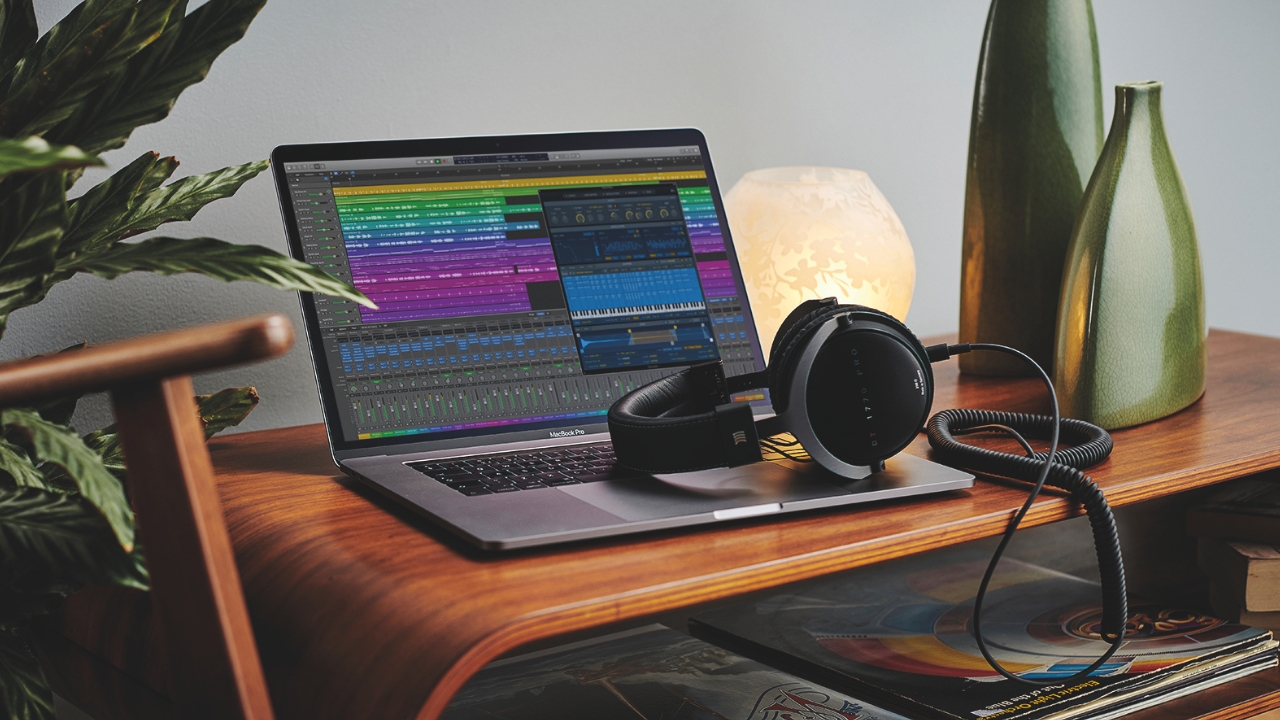
Rapidly becoming the go-to choice for the modern music producer, the best laptops for music production are powerful enough to be part of a studio setup, whilst still giving you the freedom to mix on the go. With a laptop as part of your recording rig, it's easier than ever to rock up to any recording location and have all your plugins and instruments ready to go.
There's a definite lean toward Apple machines on this list because they are typically what you will find in the modern recording studio. If you want to integrate with studios and collaborate with other music makers quickly and easily, an Apple machine is the one to go for. For the ultimate music-making machine we recommend the Apple MacBook Pro M4 as one of the best laptops in the world for production. Don't worry if your budget doesn't stretch that far though, the Apple MacBook Air M2 is a great choice that doesn't cost the earth.
We haven't got anything against Windows machines though. There are plenty of powerful options available here, and usually, they'll be cheaper than their Mac equivalents. If you tend to work solo or you don't have a massive budget, then definitely consider a Windows machine for your audio production tasks. Our favorite Windows laptop is the Dell XPS 17, which delivers superb performance with a stunning screen.
If you'd like to learn more, then make sure to have a look at our FAQs section which answers loads of common questions. We've also got a specs table for an easier way of comparing all the models on this list.
Our top picks
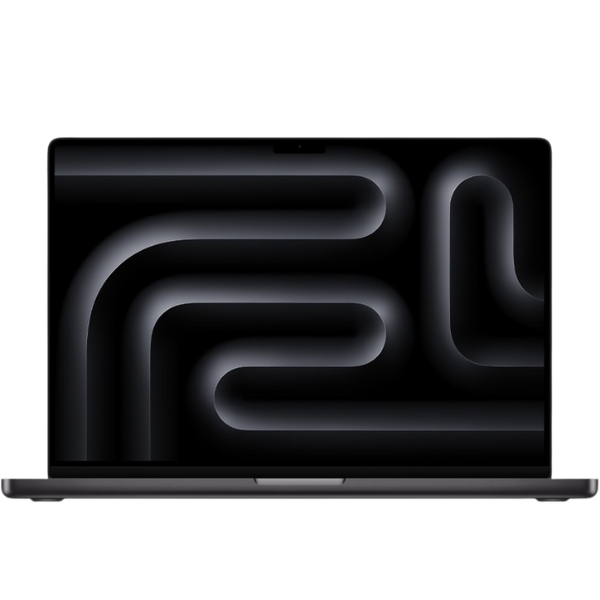
There is no doubting Apple's creative genius in music production, and this is the mobile machine on which to enjoy it to its fullest. The 16" MacBook Pro boasts the best battery life here, and is a machine that will last years before you think you need an upgrade.
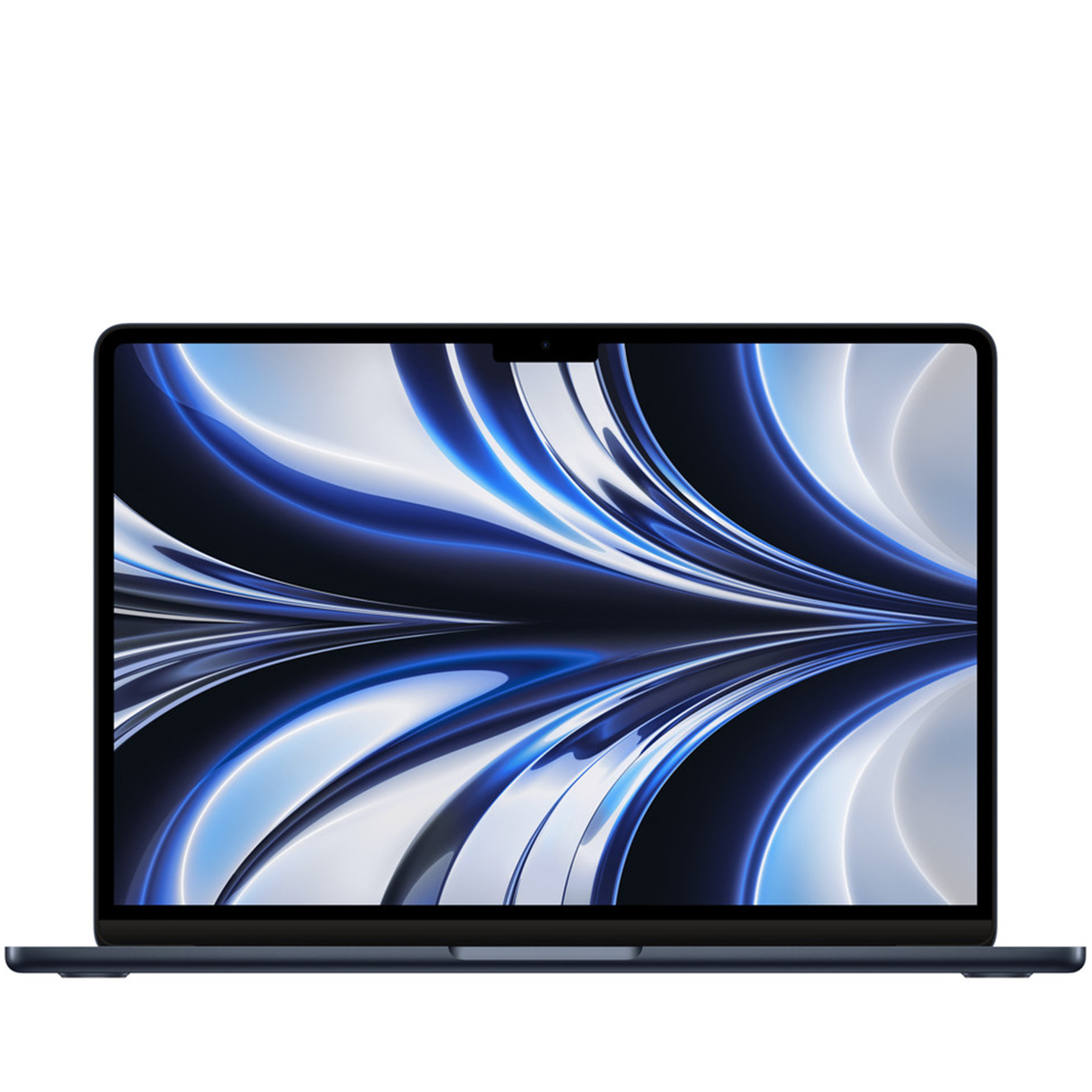
Apple's latest Pros and Airs all feature the latest M3 chips, with only this model retaining the M2. But that doesn't mean it is found lacking in the music production department. At just 1.24kg and just 11.3mm deep, the Air M2 is the cheapest portable way to get into Mac music making.
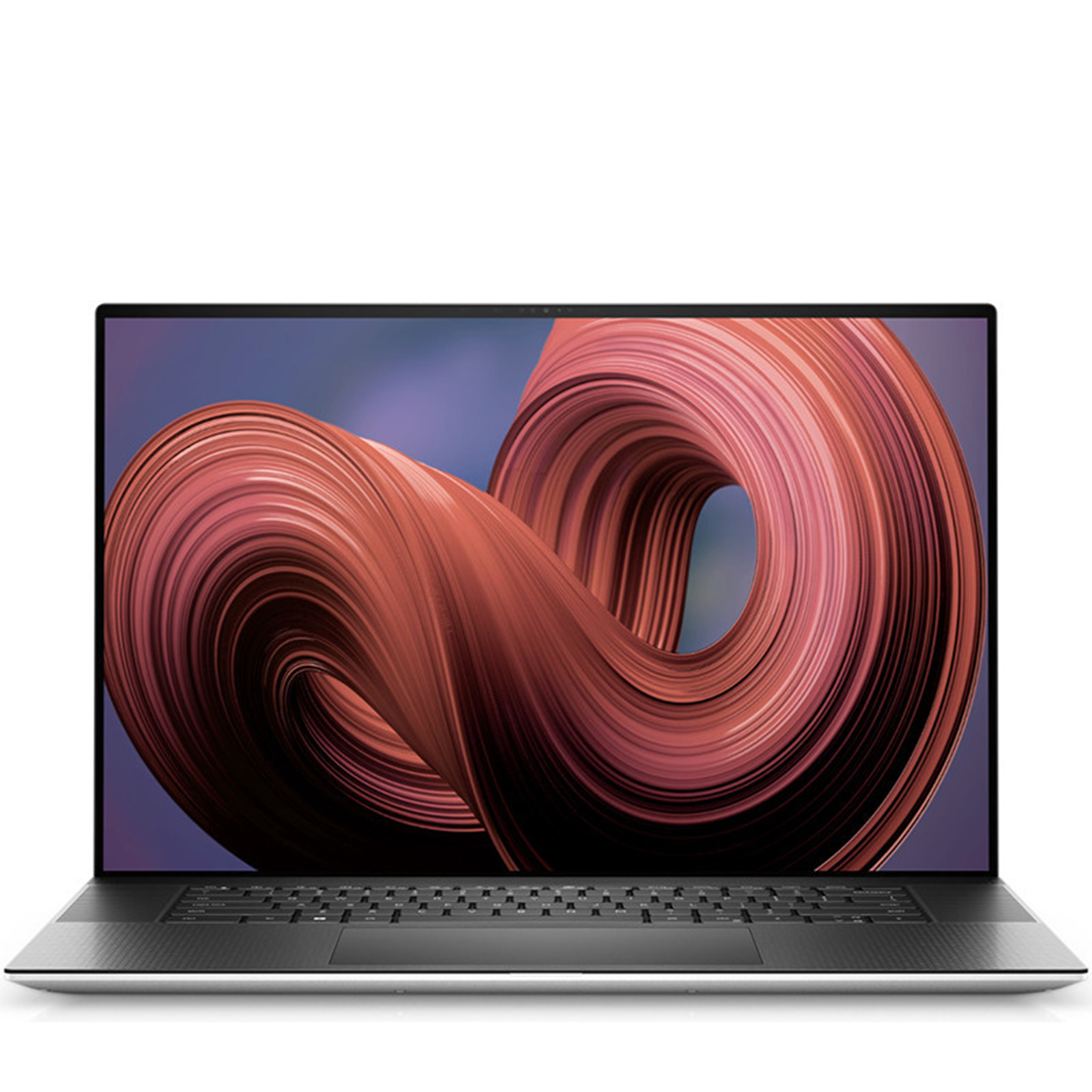
The Dell XPS line has built up a strong reputation thanks to its sleek design, gorgeous screens, and powerful spec. They are billed as the ideal laptops for on-the-go creatives who don’t fancy signing up to the Apple walled garden, and the closest Windows alternative to an Apple MacBook Pro.
Best overall
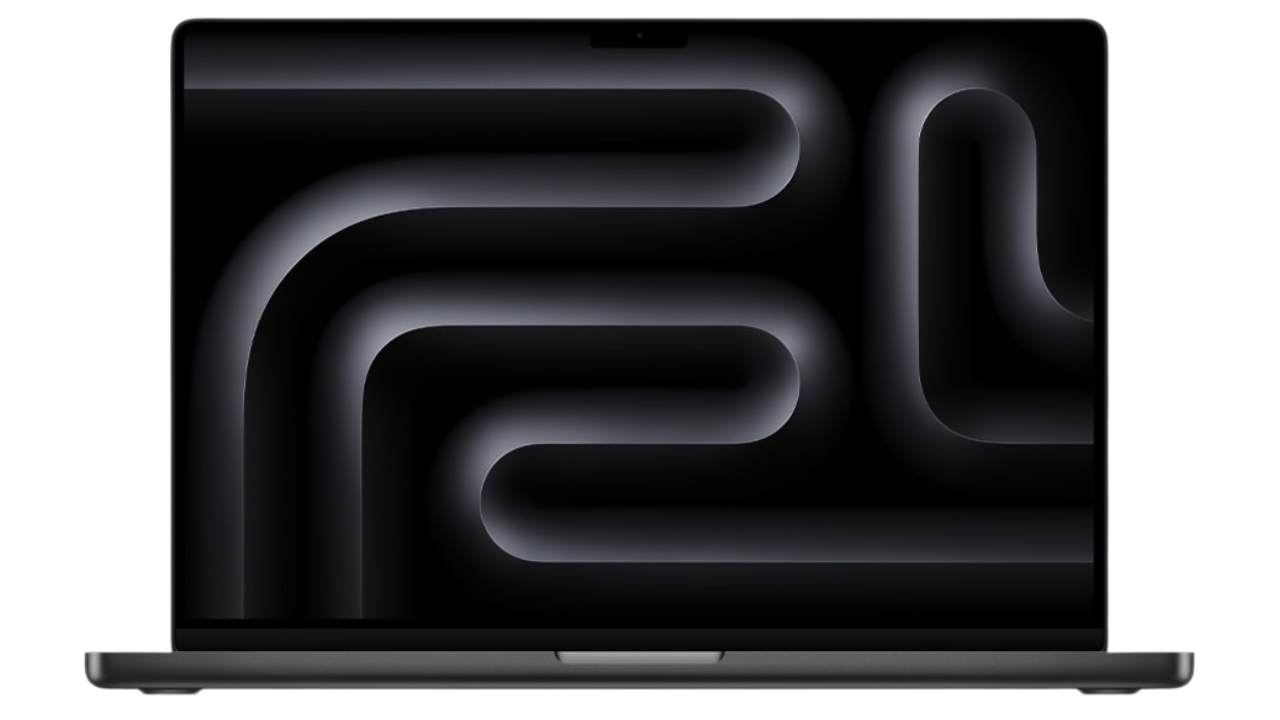
1. Apple MacBook Pro M4 16"
Our expert review:
Specifications
Reasons to buy
Reasons to avoid
✅ Buy if you want the best of the best and money is no object: Max out one of these beasts and you'll certainly pay for it, but you'll also have the most capable, future-proofed machine on the planet.
❌ Avoid if you want something more down to earth: There are much cheaper and still very capable Apple (and non-Apple) laptops out there.
Featuring improved battery life, Apple Intelligence, and some slight performance gains, the Apple MacBook Pro M4 16-inch is undoubtedly the best laptop for music production in the world right now. Is it overkill for most users? Probably. But this is the machine to buy if you want to future-proof yourself and enjoy your mobile music-making to its fullest.
Design: The look and feel of the MacBook Pro M4 is simply sumptuous. Everything is put together beautifully, and many will be glad to see the lack of the dreaded Touch Bar. The aluminum unibody gives it a real feel of durability, and the slick looks are second to none. It is heavy though, so bear in mind if you're traveling a lot you might find the 14-inch version a tad more portable.
There are plenty of ports available for connecting your audio interface and any other peripherals you have thanks to three Thunderbolt/USB 4 ports, with a dedicated HDMI if you need to hook up to a larger screen, and an SDXC card slot should you need some additional storage.
Features: Both 16" Pro models offer a great music production experience with their large 16.2" displays - the biggest screens bar just one model in this round-up - but, really, you are looking at a big price difference, compared to other Macs here. The screen is fantastic though, and if you're working exclusively on the laptop screen then that extra real estate will come in handy on projects with lots of plugins.
Usability: The fully Maxed-out MacBook Pro, in this case with the all-new M4 Max processor, is probably - okay certainly - too much for many music tasks. We've rarely pushed our 24GB RAM Air, yet the Max brute starts at 48GB RAM! Similarly, you shouldn't really pay the extortionate extra cash for an 8TB storage option when a decent separate fast hard drive will bolster the 1TB base model for much less outlay.
You can get a cheaper 16" MacBook Pro option with the M4 Pro processor, which with a (approx) 17% price drop over the full-fat M4 Max is also a more sensible offering. Either chip will deliver stunningly quick performance, even if your project is loaded with tracks, virtual instruments, and plugins.
Battery life: Still, the 16" MacBook Pro boasts the best battery life here, with up to 24 hours. This stat is for watching programs on Apple TV, so for actual music-making tasks, we imagine this number will be a little less than that. Reports suggest that you can still get a good 15-17 hours out of it even when doing more intensive tasks, which is a pretty phenomenal performance all things considered.
To conclude, this is a Mac that will last years before you think you need an upgrade - not common in Apple circles - so if anyone is wondering what to buy us for Christmas, we could easily fill that 8TB and 128GB of RAM if you pushed us… So, go on then.
| Test | Results | Score |
|---|---|---|
| Battery life | Up to 24 hours | ★★★★★ |
| Usability | Power for all tasks | ★★★★★ |
| Display | Big and clear | ★★★★★ |
| Connectivity | A nice range of ports | ★★★★☆ |
Best budget
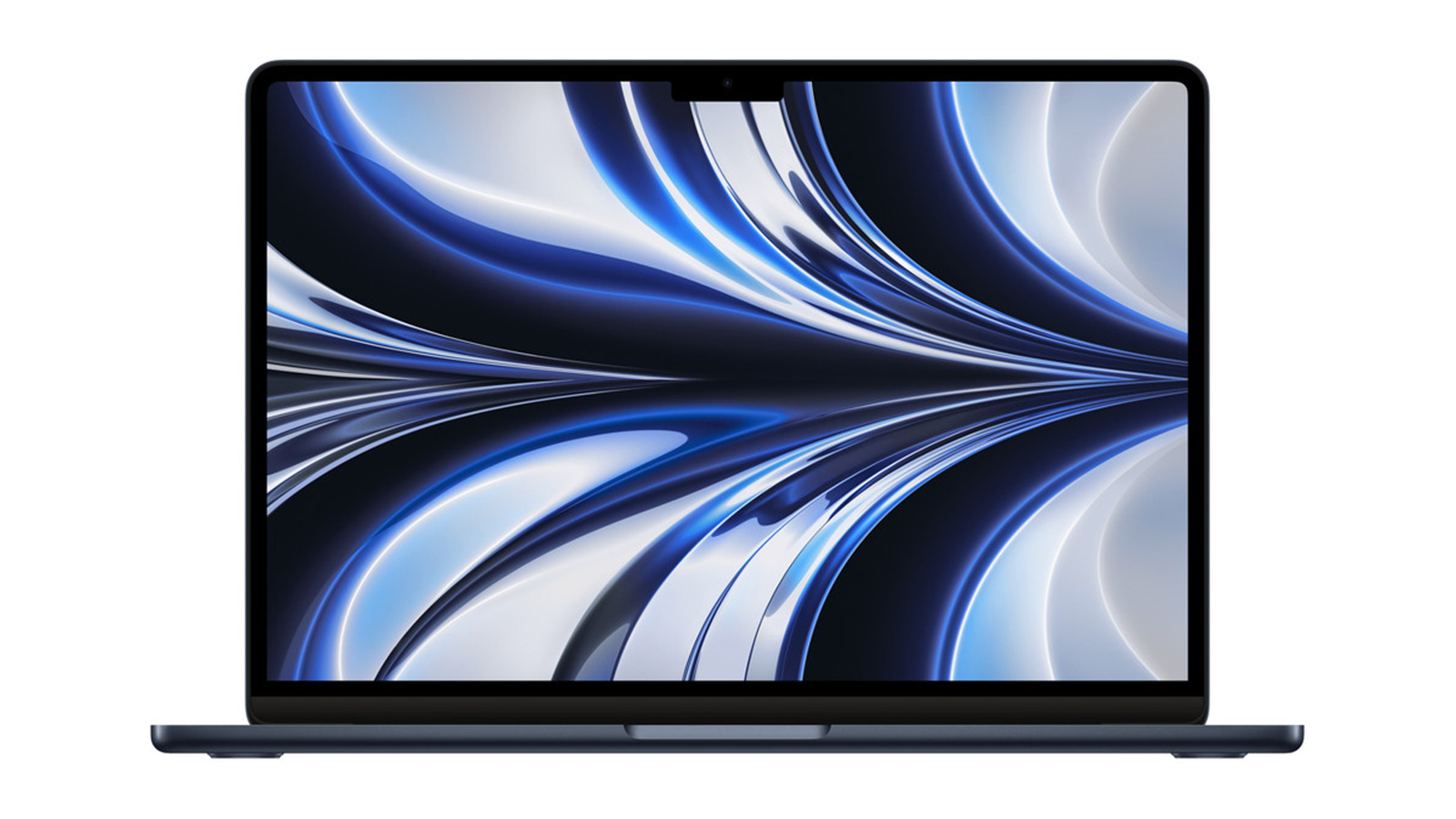
Specifications
Reasons to buy
Reasons to avoid
✅ Buy if you don't need the very latest tech: It's slim, lightweight with great battery life, while the M2 chip should serve you through many happy years of music-making.
❌ Avoid if you have a bit more to spend: Upgrading to the M3 model isn't as expensive as you might think, so you could gain a little more performance with some extra spend.
Apple's latest MacBook Pros and Airs all feature the company's latest M3 chips, with only this model retaining the M2. But that doesn't mean it is found lacking in the music production department.
Design: At just 1.24kg and just 11.3mm deep, the Air M2 is still a fabulously portable option, and its lack of a fan gives it an advantage in the noise stakes when it comes to music making as well. As with all Apple devices everything feels super slick, quite literally too, the MacBook Air is a slippery thing so be careful taking it out of your bag.
Features: You're not likely to use them for mixing, but the speaker sound is very good with Spatial Audio support and definitely a good option for checking your mix as part of your regular tests. The screen isn't the biggest here so you may find things getting a little cluttered, but it really is beautiful, offering a nice crisp display that's perfect for deep diving on waveforms.
Usability: In terms of performance, it's not as quick as some of the beefier MacBook Pro models, but it's no slowcoach either. The M2 chip does astoundingly well with most major music tasks. The only thing we found out of reach was doing orchestral scores with loads of VST instruments, for regular music-making though, you'll find plenty of power here.
Battery life: The battery life of the Air is good, quoted at 18 hours, and more than a match for most Windows laptops. As always, actual usage will differ and will likely be less than the quoted number. Our MacBook Air M2 delivered exceptional battery life, lasting a good 6 hours with plenty to spare despite spending a full day mixing and recording.
The Air M2 is still a beautiful and compact MacBook choice, and the cheapest portable way to get into Mac music-making. It still packs a punch for most music tasks, but you might consider the Air M3 if you have the extra cash for a 20-25% uplift in power.
Read our full Apple MacBook Air M2 review
| Test | Results | Score |
|---|---|---|
| Battery life | Up to 17 hours | ★★★★★ |
| Usability | Perfect for music making | ★★★★★ |
| Display | Not the biggest, but very clear | ★★★★☆ |
| Connectivity | You'll need a hub | ★★★☆☆ |
Best Windows laptop
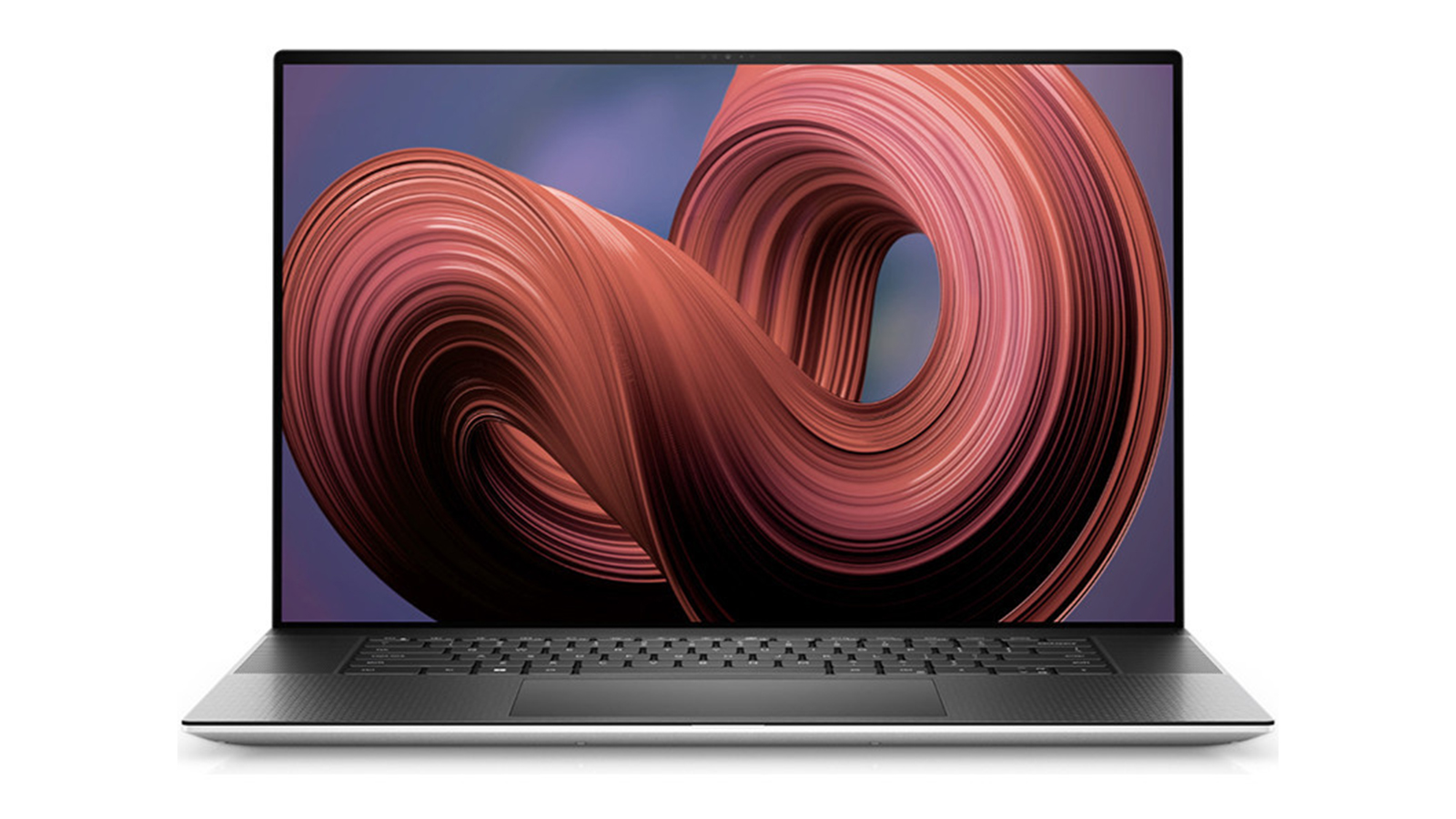
3. Dell XPS 17 (9730)
Our expert review:
Specifications
Reasons to buy
Reasons to avoid
✅ Buy if you want a high-performance Windows machine with a large screen: We've long been fans of Dell laptops for music production and this one delivers fantastic specs and plenty of screen real estate.
❌ Avoid if you want a more compact laptop: Combine the large screen and the relatively bulky chassis and it quickly becomes less appealing as an on-the-go laptop.
Despite their popularity, not everyone wants to use Mac OS to make music. Thankfully, there are plenty of great options for Windows users, and top of the pops for us is the Dell XPS 17, largely thanks to that huge screen.
Design: Otherwise the XPS 17 (and we looked at the mid range 9730 model, too) is a fantastic laptop. It has an elegant design and enough power to make you consider using it over any desktop machine.
As with many PC laptops, you can greatly configure the specs, but as you can see from the wide price range, this quickly adds up and you can easily find yourself paying around $4,000/£3,500 for those tempting extras.
Features: Sometimes you can feel restricted using a laptop screen for music production, and that's when you need to call in a machine like the Dell XPS 17. With a huge 17" screen in all configurations, it is easily the biggest laptop here, although that obviously makes it one of the least portable.
Whichever option you choose, you get a gorgeous screen, especially with the UHD+ upgrade, and while we have found 13" laptops restrictive for music making, you won't find yourself lacking space on any of the 17" configurations.
Usability: The Dell XPS 17 has some serious power. For music, gaming, and even a bit of work if you must, this laptop is a match for it all. Bulky compared to some, yes, but you might just not worry about the extra weight when you are immersed in that lovely screen.
With plenty of real estate for plugins and instruments and a powerful Intel processor, it's more than capable of being a solid workhorse for making music. We'd advise going for the 32GB model if you have the budget, as that should cover you for even the most expansive music-making projects.
Battery life: Despite the estimated 14-hour battery life, that huge display takes some serious power, especially at full brightness. Actual results for us ended up hitting around the 8-hour mark, which is significantly less than some of the others on offer here. It's not bad by any means, but if you frequently find yourself working unplugged, definitely something to consider.
Windows isn't the dirty word it used to be when it comes to music-making, so don't feel bad if you'd rather stick with what you know. The Dell XPS 17 is more than capable of competing with Apple machines in terms of power, and Windows is very much a good choice for music-making of all kinds.
| Test | Results | Score |
|---|---|---|
| Battery life | Actual use around 8 hours | ★★★☆☆ |
| Usability | A super powerful laptop | ★★★★★ |
| Display | Bright, clear, and gorgeous | ★★★★★ |
| Connectivity | Plenty of connectivity | ★★★★★ |
Best all-rounder
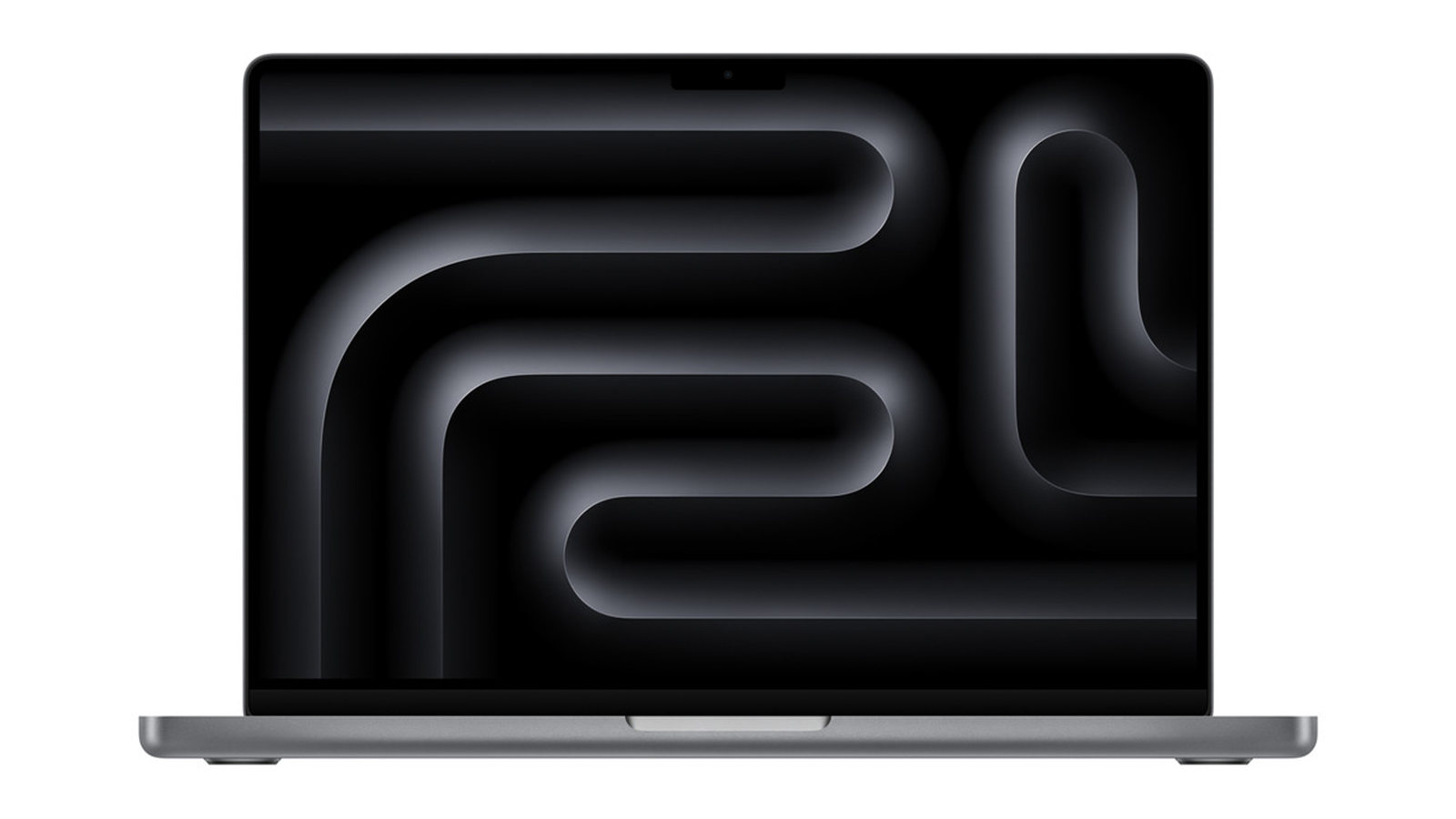
4. Apple M3 MacBook Pro 14"
Our expert review:
Specifications
Reasons to buy
Reasons to avoid
✅ Buy if you want a fantastic Apple laptop that's (a little) more budget-friendly: Apple gear still costs, but even the basic spec M3 MacBook Pro will give you plenty of music-making grunt.
❌ Avoid if you want a lighter laptop: The M3 MacBook Air matches the Pro in performance, but is much lighter and slimmer.
We've included the 16" MacBook Pro M4 as our pick for the most powerful performance laptop in this guide as it is truly the best mobile computer for music production, with the bigger screen size and power you might want (but not necessarily need). But the 14" MacBook Pro M3 represents the cheaper way of getting that mobile power with a few caveats.
Design: As with all Apple machines the design is absolutely world class. The smaller size makes it nice and portable, although it's still fairly chunky compared to the super slim MacBook Air. It feels ultra rugged too thanks to that aluminium construction.
Features: At the lowest end of the range you can get a 14" MacBook Pro for well under $/£2,000 with a standard M3 processor, but our tests have shown that the M3 Air has just as much power and a bigger screen - hence it also having a high position in this guide. So really, if the smaller 14" screen is something you are after, you might want to take advantage of the faster M3 Pro or Max processors in this machine, but either way, you'll quickly add to the asking price.
However, if you dig deep into the MacBook Pro 14" range - and there is a spec for everyone (and we could have filled this guide with various configurations) - you should be able to find a model that balances both price and power.
Usability: The M3 chips offer some of the best performance you'll find anywhere for a music production laptop. It's got bags of power to run VSTs and plugins, and with the higher RAM options available you'll be future-proofing yourself for many years to come.
It's effortlessly smooth even on the biggest project files and everything loads super quickly thanks to the SSD. Of course, as is usually the case with a Mac you might want to turn off automatic updates, as recent iOS changes have led to users not being able to use certain plugins.
Battery life: The latest MacBook Pros offer some of the best battery life we've seen in recent times. Offerings up to 17 hours on the specs list, we found that as usual, you get less under actual use, but it still delivered a very impressive performance, plenty to get a nice mix without having to plug in.
The 14" MacBook Pro is a fantastic machine - or indeed many good machines - but you will have to work out which one you need with some care. There's a machine for everyone here, but you might have to do some digging (and maths) to find it.
| Test | Results | Score |
|---|---|---|
| Battery life | Excellent real world performance | ★★★★★ |
| Usability | Bags of power for music making | ★★★★★ |
| Display | Screen is great, although not the biggest | ★★★★☆ |
| Connectivity | Plenty of connectivity | ★★★★★ |
Best portable laptop
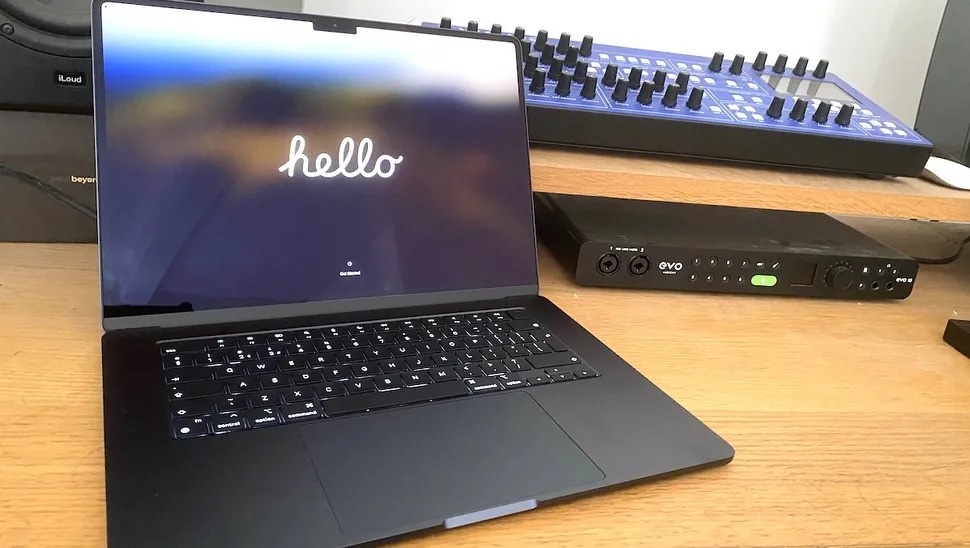
Specifications
Reasons to buy
Reasons to avoid
✅ Buy if you mostly make music on the go: The Air is lightweight, comes as a 13" screen variant and has plenty of power under the hood for most tasks.
❌ Avoid if you're on a budget: The M3 Air is still expensive. Instead, we'd recommend the M2 Air which still offers stellar performance for much less outlay.
Apple has now updated all of its laptops to the latest M3 range of chips. Only the Air is also still available with the older M2 processor if you're looking for something a little cheaper.
Design: The ultra-sleek design of the MacBook Air M3 is perfect for those who need a laptop capable of traveling around with them. It's ultra-lightweight, slim enough to fit into a backpack with plenty of room to spare, and it's available in four different colours too.
Features: The Air M3 on test here is available in two sizes: 13-inch (actually 13.6-inch) and 15-inch (15.3-inch). We much prefer the larger screen size for music making and have found 13" laptops restrictive in the past. With only two Thunderbolt 4/USB-C ports, you'll definitely need a USB hub for the majority of music-making tasks.
Usability: We carried out several benchmark tests between the Air M2 and this all-new M3, and found that in Ableton Live we got a 25% uplift in performance for the M3, rising to 30% in Logic, more than even Apple claims! Our sister site TechRadar even suggests that the Air M3's multicore stats are right up there with the entry-level M3 MacBook Pro.
To our mind, the M3 Air is a better buy than that base-model MacBook Pro as it boasts a bigger screen and equal power, but costs less. We also discovered in our tests that the bigger 15" model has a significantly better sound from its own speakers over the 13" Air.
Battery life: As with all the recent MacBook M3s, we've found the battery life to be simply superb. Even under heavy load, it lasts for hours, enabling you to perfect your mix without having to plug into an outlet.
Combine the performance with the quiet Air operation, the sleek design, and the larger screen, and we think the 15-inch Air M3 is currently one of the best laptops for mobile music production.
Read our full Apple MacBook Air M3 review
| Test | Results | Score |
|---|---|---|
| Battery life | Performs brilliantly | ★★★★★ |
| Usability | Super smooth with plugins | ★★★★★ |
| Display | Beautiful screen, with plenty of space | ★★★★☆ |
| Connectivity | Only two Thunderbolt ports | ★★★☆☆ |
Best 2-in-1 laptop

Specifications
Reasons to buy
Reasons to avoid
✅ Buy if you prefer a touch screen: This one also doubles as a tablet, so if you want a device that can also serve as your entertainment and work machine, this is definitely one to look at.
❌ Avoid if you don't need a touchscreen: Why pay for something you don't need or want?
For Windows fans, their range of crossover tablet-slash laptops is a left-field, but potentially powerful option when considering your next music production laptop.
Design: The screen is stunning thanks to its 120Hz refresh rate, meaning that everything looks incredibly detailed and runs smoothly. It's got ten-point multi-touch capability too, offering some neat features for producers that allow you to quickly make adjustments without having to reach for the mouse. The ability to split it quickly and turn it into a tablet is a great feature in general, whether you're using it for music production or not.
Features: The Microsoft Surface Pro 9 is an absolute beast of a machine, coming with a 12th-gen i7 processor, 16GB RAM, and a 256GB SSD drive, making it more than a match for vast music projects on the go or in the studio.
Usability: In our tests it performed admirably with a huge ProTools project, running well over 200+ tracks at an ASIO buffer size of 64 before we began to notice any pops and clicks. Compatibility is excellent as well, as at the time of writing there are no known issues with plugins and Windows 11, unlike a certain popular OS.
The overall feel of Windows 11 is really nice, and it delivered smooth performance for us throughout our tests. It's a great option if you need a tablet for certain tasks but still want to retain that laptop feel when you sit down to mix, although it does give it a weird weight distribution, as the top of it is heavier than the bottom in laptop mode.
Battery life: We found the battery life did pretty well, but was nowhere near the stated 15.5 hours when mixing a track. As usual, these figures are probably just for browsing so it's not much of a surprise to find it not lasting as long. It definitely held its own but wasn't as long-lasting as some of the MacBooks on offer here.
If you're not willing to go the MacBook route, and you want something ultra-versatile then the Surface Pro 9 is a great option. The ability to split it and use it as a tablet might be a tick in the box for any producer moonlighting in live sound too.
Read our full Microsoft Surface Pro 9 review
| Test | Results | Score |
|---|---|---|
| Battery life | Very usable battery life | ★★★★☆ |
| Usability | Awesome performance when mixing | ★★★★★ |
| Display | Beautiful screen, with touch functionality | ★★★★☆ |
| Connectivity | Just two USB-C ports | ★★★☆☆ |
Best MacBook alternative
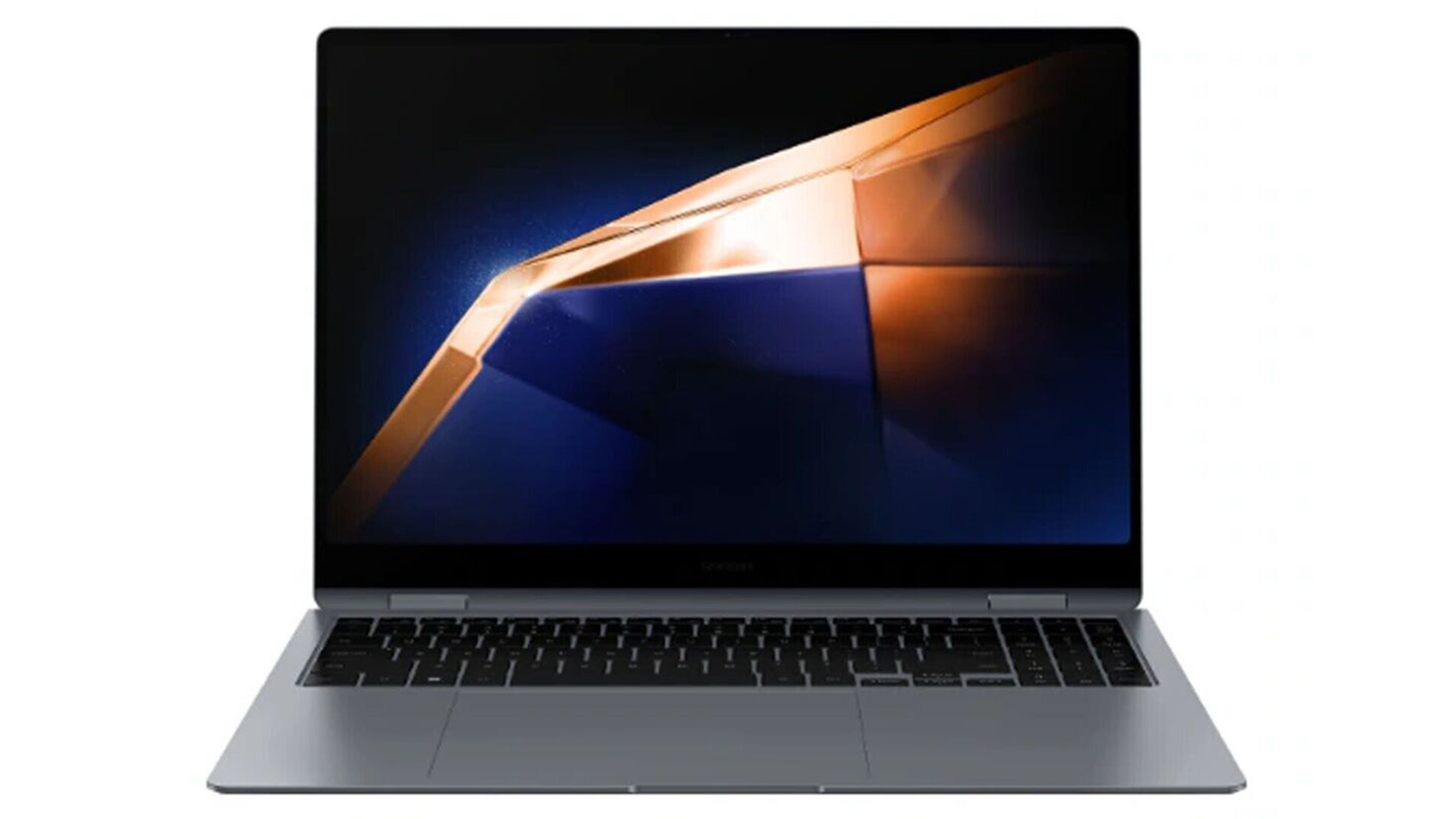
7. Samsung Galaxy Book4 Pro
Our expert review:
Specifications
Reasons to buy
Reasons to avoid
✅ Buy if you like MacBook feel and looks but prefer Windows: This is an ideal choice if you want the familiar MacBook aesthetic but prefer working in Windows.
❌ Avoid if you want the real deal: Why buy something that looks like a Mac when you could just get a Mac? If you have the cash, we say go for it.
The Samsung Galaxy Book4 Pro gets you a similar look and feel to an Apple MacBook but within the Windows world. If you can't see yourself working in MacOS, then this is the laptop you should try.
Design: It's a pretty derivative design which is obvious from just a glance at the Galaxy Book4. It's not quite as slick as an Apple machine but it's certainly not bad looking either, and the overall feel of it is nice and robust.
Features: The Galaxy Book4 Pro is available in both 14" and 16" models and its OLED screen is a huge highlight with a lovely image quality and 120Hz refresh. It also scores over Apple machines with touch input. There's a nice amount of connectivity, although there are others with more slots for MIDI Controllers and your audio interface.
Performance: Performance-wise, it sits around or just above the same benchmarks as the MacBook Air 13" M2. However, compared to the Apple machines its speakers do disappoint - not that we'd recommend using any laptop speakers for detailed mixing - but for general music listening, they aren't the greatest.
Battery life: We got around ten hours of battery life out of the Samsung which is decent, certainly plenty enough to get a mix sorted if you know your stuff. Of course, if you're doing lighter duties or just browsing, you'll probably get a lot more out of it.
Overall this is one of the best MacBook alternatives out there, and a great laptop for music production in its own right.
| Test | Results | Score |
|---|---|---|
| Battery life | Good battery life | ★★★★☆ |
| Usability | Comparable to an M2 Air | ★★★★☆ |
| Display | Very usable screen | ★★★★☆ |
| Connectivity | Nice choice of connectivity | ★★★★☆ |
Best slimline laptop

8. Acer Swift X14
Our expert review:
Specifications
Reasons to buy
Reasons to avoid
✅ Buy if you want a laptop with a lush screen: The OLED screen nestled in this slim ultrabook is beautiful - ideal for those long, eye-straining Ableton sessions.
❌ Avoid if you want more battery life: You'll only get around 8 hours before you're reaching for the power supply, so not such a mobile-friendly machine.
While it's not quite up there with a MacBook Pro 14" the Acer Swift X14 is among the best Ultrabooks you can get.
Design: With the Swift X14, Acer has squeezed both a powerful CPU and GPU into a slim Ultrabook form and topped it off with a gorgeous OLED screen. It's nice and portable too, making it a great option for mixing while traveling. It's nice an sturdy with minimal flexing in the laptop as a whole, which means it'll put up with being chucked into a backpack and used on the go.,
Features: The OLED screen is the real star of the show, looking absolutely stunning. Great if you want a machine that's good for watching films too. It's got plenty of connectivity as well, especially versus something like the MacBook Air. This means you won't likely have to use a USB hub, which is one less thing to carry when you're on the go.
Usability: There's plenty of power on offer here for multitasking, making it well-suited to music production tasks. It doesn't perform as well in benchmark tests as some of the others on this list, but it's certainly a capable bit of kit. Performance wise there’s little the Acer Swift X14 can’t do - it's a small machine that will handle many music tasks.
Battery life: It's not the cheapest machine and the battery life of around eight hours when running at full power is nothing to write home about. That OLED screen definitely comes at a cost here. It's not the worst out there, but there are others on this list that perform much better.
The Acer Swift X14 is not a cheap machine but that price does make sense if you factor in the power and screen, and we think it is one of the best compact choices for music out there.
| Test | Results | Score |
|---|---|---|
| Battery life | Decent, but not the best | ★★★☆☆ |
| Usability | Very usable performance | ★★★★☆ |
| Display | Beautiful screen | ★★★★★ |
| Connectivity | Excellent selection of ports | ★★★★★ |
Best for gamers
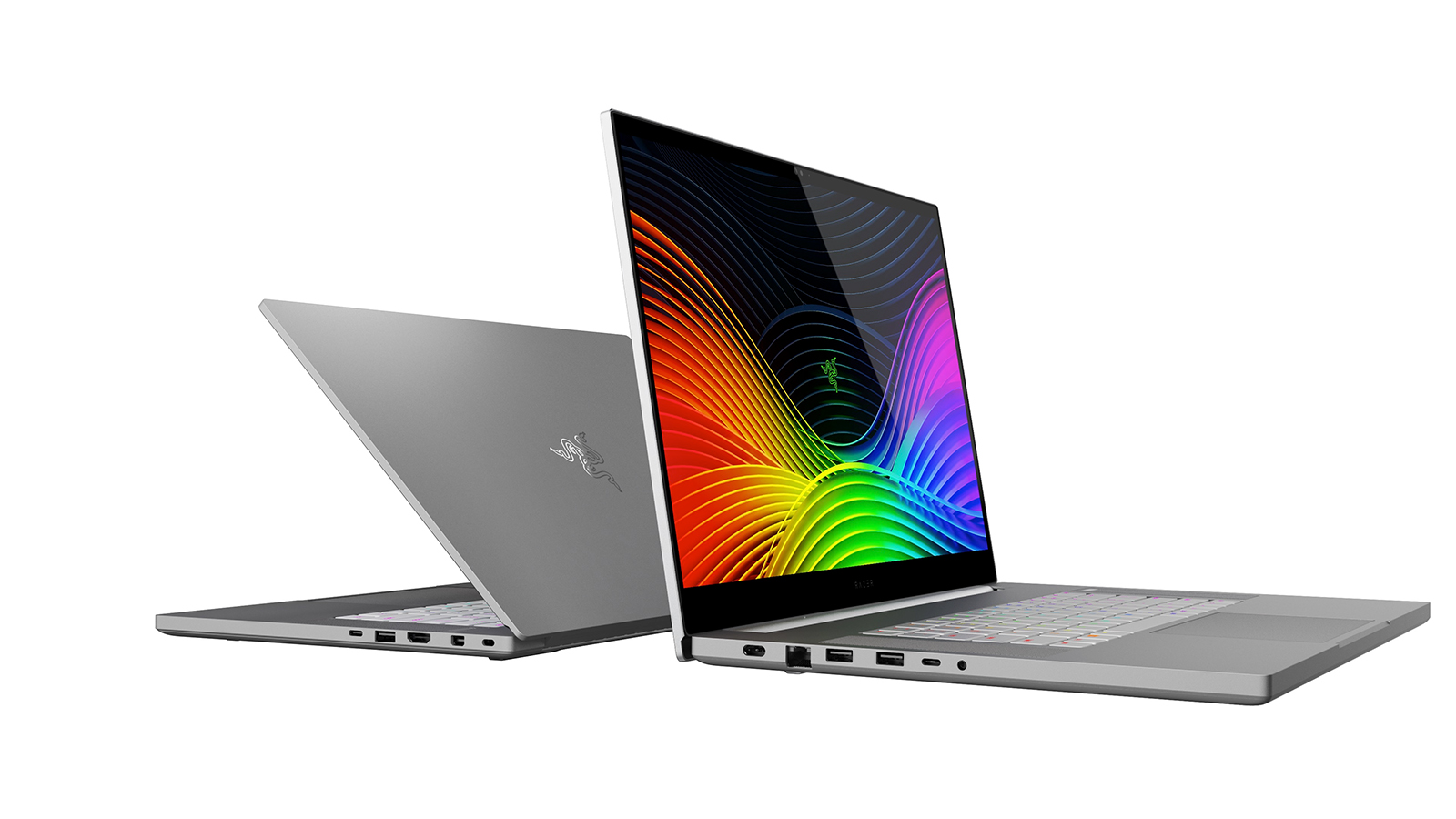
9. Razer Blade 15 Studio Edition
Our expert review:
Specifications
Reasons to buy
Reasons to avoid
✅ Buy if you want power: Gaming laptops need to be supremely powerful, which is what makes this one such a great option for monster music projects.
❌ Avoid if you're a casual music-maker: All that power could be unnecessary for the majority of hobbyists, and it comes at a huge cost too.
Think of a gaming laptop, and you probably imagine garish colours, RGB lights all over the shop, and enough power under the hood to light up a continent. With the Razer Blade 15 Studio, however, we have a monstrously powerful laptop with its origins in the gaming world, but with its sights very much set on creative pursuits.
Design: There are some nice visual touches, from the customisable RGB backlighting on the keys, but it's really not one of those brightly colored gaming beasts that demands attention, at least on the surface. It looks professional, so you won't feel out of place when you rock up to the studio with it. It's nice and slim too, perfect for traveling with.
Features: With bags of processing power and huge 32GB to 64GB RAM capacity, you certainly aren't going to be lacking when it comes to multi-tasking loads of plugins in a large project file. The spec sheet is impressive, and it also comes with a very powerful GeForce RTX GPU, so if you're a gamer or video editor this laptop will make you very happy indeed.
Usability: Gaming laptops are often powerful enough for music creation as they require beefy CPUs and plenty of RAM to perform. We found the Razer Blade to be more than powerful enough to handle CPU-intensive tasks with multiple plugins, and we absolutely love the clarity of the OLED screen.
Battery life: This is a powerful laptop and if you're gaming with it, don't expect to get much battery life out of it. We got around 5-6 hours with music-making tasks, which isn't particularly impressive on the face of it, but certainly enough to perfect a mix in a pinch.
This is a very powerful, and incredibly expensive laptop, so it's really only suited to those musicians who absolutely need to play CyberPunk 2077 alongside their regular music-making duties.
| Test | Results | Score |
|---|---|---|
| Battery life | Amongst the shortest here | ★★★☆☆ |
| Usability | Incredibly powerful | ★★★★★ |
| Display | Very usable screen | ★★★★☆ |
| Connectivity | Great variety of ports | ★★★★★ |
Spec comparison
Struggling to decide which laptop to go for? Here's a side by side comparison of all the models in this guide to help you narrow it down.
| Model | CPU | RAM | Storage | Battery | Screen |
| Apple MacBook Pro M4 | M4 Pro/Max | 42-128 GB | 512GB-8TB | Up to 24hrs | 16" |
| Apple MacBook Air M2 | M2 Pro/Max | 8-24 GB | 256GB-2TB | Up to 18hrs | 13.6" |
| Dell XPS 17 | Intel i7/i9 | 16-64 GB | 512GB-8TB | Up to 14hrs | 17" |
| Apple MacBook Pro M3 | M3 Pro/Max | 8-128 GB | 512GB-8TB | Up to 17hrs | 14" |
| Apple MacBook Air M3 | M3 Pro/Max | 8-24 GB | 256GB-2TB | Up to 18hrs | 15" |
| Microsoft Surface Pro 9 | Intel i7 | 16-64 GB | 256GB-1TB | Up to 15.5hrs | 13" |
| Samsung Galaxy Book4 Pro | Intel Ultra5/7 | 16-32 GB | 256GB-1TB | Up to 21hrs | 14" |
| Acer Swift X14 | Intel i5/i7 | 16-32GB | 512GB-1TB | Up to 10hrs | 14.5" |
| Razer Blade 15 Studio Edition | Intel i7 | 32-64GB | 1TB | Up to 6hrs | 15.6" |
How to choose
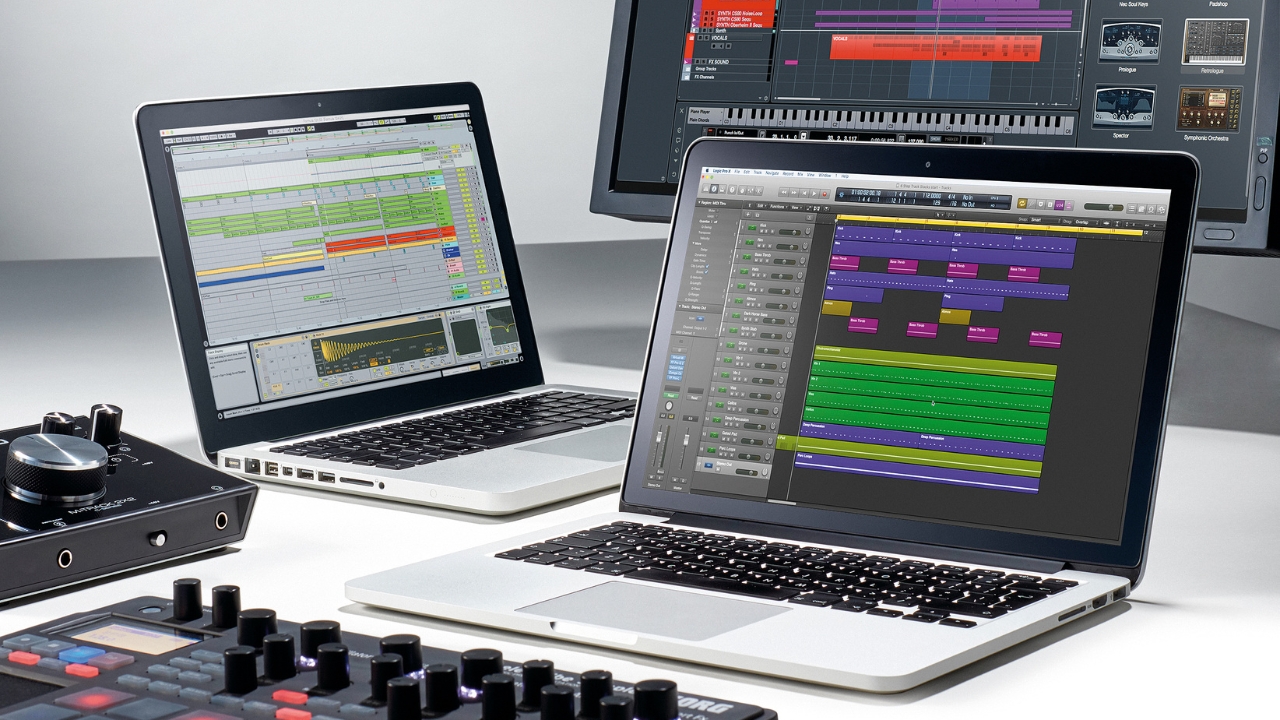
There are three critical factors to consider when selecting a laptop for music production. CPU power, RAM, and storage amount. These are the specifications that matter the most in production, with CPU and RAM controlling how many plugins and instruments you can use, while storage is important for all your core programs.
There are a lot of laptops to choose from in the modern age, and having tested numerous amounts of them, as well as using them on the daily in our own productions, we've put together some advice to help you get the most out of your new laptop shopping.
1. Consider your goals
First up, you need to think about what you actually need your laptop for. Are you producing guitar demos for your band? Recording multiple microphones in a treated room? Composing soundtracks for films? The usage of your laptop in your music-making tasks should help you understand what amount of power you require and how much you spend.
If you're just doing simple demos, then you probably don't need huge amounts of CPU power and RAM amounts. Conversely, if you're composing for soundtracks, that's going to use a lot of power running complex orchestral VSTs. Keeping these in mind when doing your shopping will serve you well further down the line.
2. Read reviews
Once you've got your goals in mind, start looking at reviews of the models that interest you the most. A good review will help inform your decision, giving you real-world usage of the laptop in question which will get around any marketing spiel from the manufacturer.
Be aware that not all reviews are impartial like ours though. There's an inherent bias in customer and forum reviews at times, as people often don't like to admit they made a mistake when buying something. Our reviews are free of bias, completely impartial, and always through the lens of a musician.
3. Compare your laptops
Hopefully, the process of review reading will have narrowed down your selections. Now with a shortlist of laptops, it's time to compare your choices and close things down further. Always keep your music-making goals in mind here, but looking at CPU performance scores, RAM amounts, storage capacities, and anything else that's important to you can be a big help in getting you closer to your end goal.
4. Choose your retailer
Now for the fun part! It's time to decide where to buy your laptop from, whether it's the manufacturer directly or a 3rd party retailer. Using the price comparison tool on Google can be a great way to determine who has the cheapest price. You can also use the filter tools on many retailer websites to help narrow down your search and compare models and price points quickly and easily.
5. Wait for a sale
If you're not in a rush, you could always wait for a sale before buying to see if you can grab some extra money off your preferred model. There are usually some great Black Friday music deals in October and November, and you can grab some great deals in the Memorial Day and President's Day sales too.
FAQs
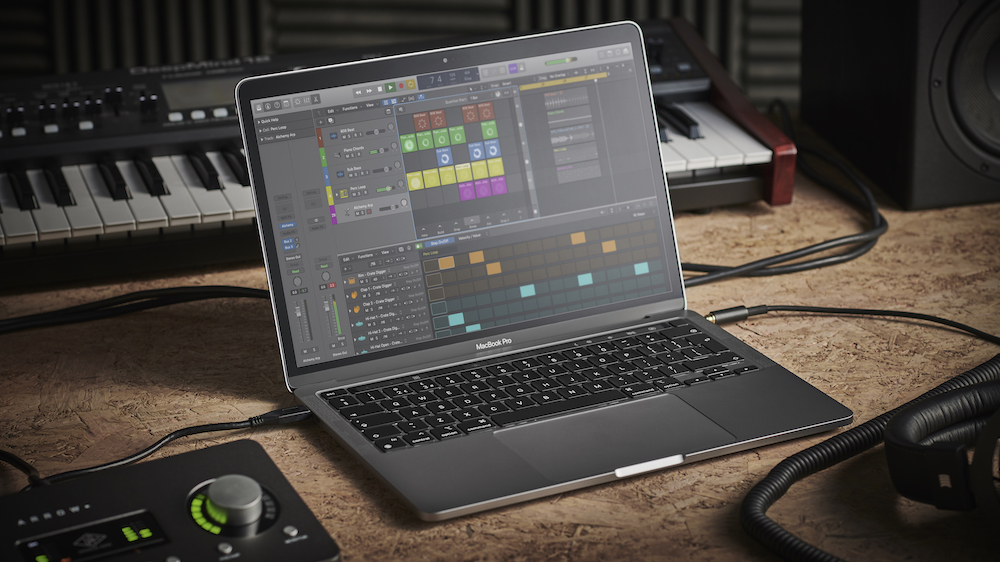
Which CPU is best for music production?
Essentially, a faster processor (or CPU) means two things: your computer can handle more tasks being thrown at it, and it can 'process' those things a lot quicker. You may see only small differences; perhaps an audio file will render one minute quicker using the faster of two processors, but over time this clearly adds up.
In the CPU world, there are two major players. Intel is the big name, with a huge share of the market. Intel’s range goes from i3 - the least powerful - all the way up to i9. Most common in mid-to-upper tier laptops, however, are the i5 and i7 variants, and within that sphere you have different speed ratings, measured in gigahertz, as well as the option to turbo-boost when you’re placing the computer under major stress.
With newer machines, you might find the 'i' has been dropped so the range is referred to as Core 3/5/7/9.
The other name to look out for is AMD, which produces the Ryzen processors. These follow a similar nomenclature to the Intel versions, so R3, R5, R9 and so on, and are popular among the gaming crowd.
Apple has a great heritage in producing machines designed for creative pursuits, and just as the rest catch up with them, it flips the script again. You may have seen newer Apple machines with their 'M'-range chips inside them. These essentially combine many of the laptop's internal components onto a single chip, resulting in incredible power and overall system efficiency. Apple’s newest machines feature the M2, M2 Pro, M2 Max, M2 Ultra, M3, M3 Pro and M3 Max chips. We go into more detail on M2 vs M3 Macs in this article.
The good news is that these gains absolutely benefit producers, offering best-in-class performance and processing grunt, while also delivering longer battery life and other optimisations. Put simply, Logic Pro X users on an M3-based machine are at the head of the DAW pack right now. The bad news, however, is that many third-party software brands haven’t yet made the switch required to make the most of it. More are catching on, with big names like Ableton and Akai offering full native support.
The best advice we can give is to do your research - all of the major developers are aware of the new chips, and are likely working on native support, so it depends on your current setup and desire to rock the boat. If you can, and don’t anticipate major problems, then we’d absolutely advise looking at these new breeds of MacBook.
What do I need to know about Apple's new processors?
Until late 2020 Apple computers used Intel processors - the same type that you'll find in most PCs. Since then the company has been introducing its M range of chips, so far the M1 and M2 ranges and the latest M3, M3 Pro and M3 Max (currently available in the latest MacBook Airs and MacBook Pros). These combine both CPU (central processing unit) and GPU (graphical processing unit) on one chip, with each indicated by a number of cores - and the more of these, the better in terms of power.
The base M2 processor has eight or 10 cores each and is found in the Air and Mac Mini with faster M2 processors in the Mac Studio and Mac Pro. The Mac Studio has either an M2 Max (12-core CPU, 30-core GPU) or a maximum M2 Ultra chip that goes up to 24-core CPU and 76-core GPU. The Mac Pro, meanwhile, also has a maximum M2 Ultra chip (up to 24-core CPU and 76-core GPU).
The M3 processor ups the number of cores to a maximum of 16 CPU and 40 GPU and variations of the M3 are found in the iMac, Air, and 14" and 16" MacBook Pros. The variations are the standard M3, M3 Pro and M3 Max.
If all of this talk of M-range processors is baffling, just take away one fact from it. In our tests, the M range outperformed the original Intel Mac processors by at least three to one, so whichever M chip you choose, expect a big power boost over your old Intel Mac.
How much RAM does your music making laptop need?
With RAM, as we mentioned, you can ignore the 'minimum specs' listed on the websites of the major DAWs. Anybody who tries to run a multitrack Ableton Live session on a laptop with 4GB of RAM is braver (or more patient) than we are.
That’s because RAM is effectively the short-term memory of your machine. With audio applications, particularly those involving lots of recorded audio, a higher amount of RAM means your audio playback is buttery smooth and glitch-free because the computer isn't having to 'grab' the audio from the hard drive each time it wants to play.
If you're buying now, with the next few years of use in mind, we'd suggest 8GB of DDR4 memory is the absolute minimum you should be looking for. Ideally, you'd want 16GB, as this will handle much larger arrangements, although there is a cost to this extra resource.
It's also worth investigating whether the laptop you choose can be upgraded with extra RAM in the future. Apple laptop fans won't have this luxury, due to their sealed chassis, but laptop PC users might.
How much storage do I need?
Storage memory comes a close second. For audio applications, particularly those involving sample libraries where audio is streamed from disk, you'll want to use a solid-state drive (SSD). The benefit of these drives is the rapid data transfer, meaning files load quicker, although they are slightly more expensive than their hard disk drive (HDD) equivalent. For music production applications, however, the extra expense is totally justified.
It's not uncommon however to see a combination employed – an HDD for storage of files, photos, and videos, and an SSD for tasks where more instantaneous responses are required. The alternative involves using external hard drives; SSDs, particularly those that take advantage of USB-C technology, are more than capable of the types of transfer speeds required for music production.
Is Mac OS better than windows?
So, we reckon this debate will rage for eternity, with many evangelising the Windows infrastructure, while others remain eternally devoted to Apple. There will always be two camps, but in truth either will serve you well for music making these days.
That said, if money is no object then we would recommend exploring the Apple route - it's no coincidence that four of the top five music production laptops in this guide bear the Apple logo. They just work for music - with killer hardware and audio optimised spec - and as the M-series chips continue to evolve and developers invest in making their software and plugins cooperate, making music on Apple machines will remain firmly ahead of the game.
Of course, not every producer has the budget for Apple and there are so many great Windows alternatives in this guide that will do a similar job for much less, with the added bonus of being able to upgrade hardware like RAM to keep up with the game - a feature that's distinctly lacking on Apple machines.
How we test

So, clearly there is a lot to think about when choosing the best laptop for music production.
It's easy to see why a good all-round laptop can fetch a premium price tag, but, as with anything from the best samplers and studio monitors to home studio mixers, you get what you pay for, so it's always wise to get the best you can afford, rather than skimping and regretting your purchase later (often quicker than you thought). Our price comparison software will come in handy here. Next to each product entry on this guide our price widgets will display the best deals online right now to save you shopping around.
In this guide we don’t focus on various legacy ins and outs, such as the number of USB sockets, or lack of, for your audio interface, and so on. With so many dongle and docking options available, this shouldn’t be a deciding factor in your purchasing journey. In this guide we're talking sheer horsepower for music-making. For example, can your portable rig cope with large multitrack sessions, running handfuls of plugins and MIDI instruments?
When testing a laptop for music production, we take into account a variety of design aspects, features and power. On a basic level, a music production laptop must be portable and powerful. For the latter consideration, that's why we often include those gaming laptop PCs as they are designed to deliver clout.
Obviously a lightweight design is great, but we also need connections - Thunderbolt, USB-C or even A for older interfaces. Really the more the better, although most Apple laptops now only feature a couple of Thunderbolt 3 ports which you can just about get away with for music.
In terms of power, it is often difficult to compare processors just on their specs as they can work very differently in a real world music production environment. With that in mind, where possible we compare and contrast by using standard DAW projects from the likes of www.logicprohelp.com and www.music-prod.com. Here you simply run the project and add audio tracks until your machine falls over. You then get an idea of the power of a particular processor in a real production scenario.
Finally we'll also look at screen and speaker performances. Certainly Apple excels at these with recent speaker designs that can be (just) used for mixing plus vibrant screens that help you see everything your DAW has to offer.
Read more about how we test music making gear and services at MusicRadar.
Related buyer's guides
MusicRadar's got your back
- Our pick of the best Macs for music production
- Best mouse for music production: mice, trackpads and trackballs
- Check out our guide to the best budget PCs for music production
- Our pick of the best PCs for music production
- Best DJ laptops: PC and Mac options for the booth and beyond
- Organise your recording space with the best studio desks
Get the MusicRadar Newsletter
Want all the hottest music and gear news, reviews, deals, features and more, direct to your inbox? Sign up here.

I take care of the reviews on MusicRadar and Future Music magazine, though can sometimes be spotted in front of a camera talking little sense in the presence of real musicians. For the past 30 years, I have been unable to decide on which instrument to master, so haven't bothered. Currently, a lover of all things high-gain in the guitar stakes and never one to resist churning out sub-standard funky breaks, the likes of which you'll never hear.
- Matt McCrackenJunior Deals Writer
- Andy Jones
- Chris Corfield